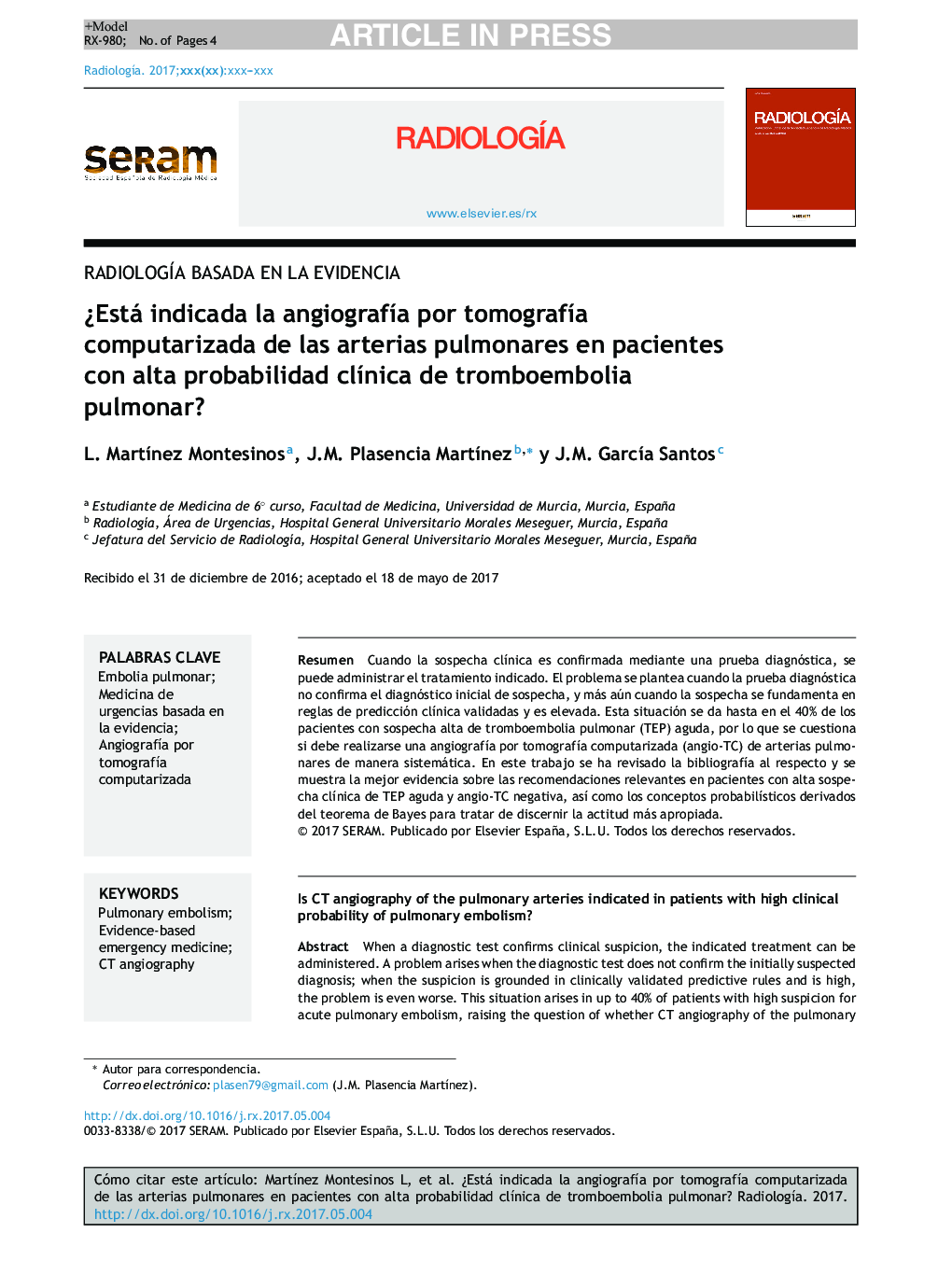| Article ID | Journal | Published Year | Pages | File Type |
|---|---|---|---|---|
| 8824716 | Radiología | 2018 | 4 Pages |
Abstract
When a diagnostic test confirms clinical suspicion, the indicated treatment can be administered. A problem arises when the diagnostic test does not confirm the initially suspected diagnosis; when the suspicion is grounded in clinically validated predictive rules and is high, the problem is even worse. This situation arises in up to 40% of patients with high suspicion for acute pulmonary embolism, raising the question of whether CT angiography of the pulmonary arteries should be done systematically. This paper reviews the literature about this issue and lays out the best evidence about the relevant recommendations for patients with high clinical suspicion of acute pulmonary embolism and negative findings on CT angiography. It also explains the probabilistic concepts derived from Bayes' theorem that can be useful for ascertaining the most appropriate approach in these patients.
Related Topics
Health Sciences
Medicine and Dentistry
Radiology and Imaging
Authors
L. MartÃnez Montesinos, J.M. Plasencia MartÃnez, J.M. GarcÃa Santos,
